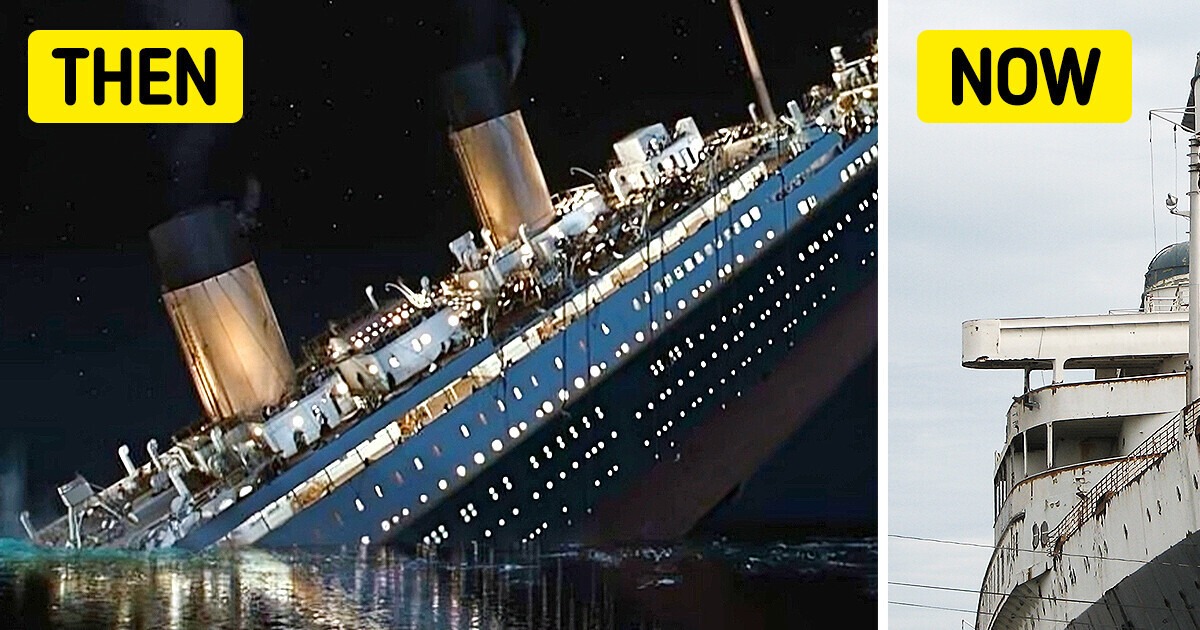I Refuse to Forgive My Parents—They Bought My Brother a House and Left Me With ‘Sorry’


When the Titanic set sail in 1912, it was hailed as the largest and most luxurious ship of its time. Decades later, the SS United States surpassed it in both size and engineering. Now, this iconic cruise ship, once celebrated as a marvel of modern engineering, is set to be sunk in the ocean. And, here’s the reason why.
Built in 1952, the SS United States measures 990 feet in length and 101 feet in width, making it larger than the Titanic, which was 882 feet long and 92 feet wide. The ship was designed to carry over 2,000 passengers and boasted a top speed of 38 knots, significantly faster than Titanic’s maximum speed of 24 knots. These impressive stats solidify the SS United States’ place in maritime history as a superior engineering feat.
While the Titanic captured the imagination of the early 20th century, the SS United States eclipsed it in many ways. Its larger dimensions, faster speeds, and innovative design made it a standout in maritime engineering. Unlike the Titanic, the SS United States was built with safety as a priority, featuring fireproof materials and advanced lifeboat systems. These differences highlight the ship’s historical and technological significance.
The SS United States was once a beacon of luxury and innovation. Dubbed “America’s Flagship,” it served as a transatlantic liner, ferrying passengers in record time. With interiors designed by leading architects and a reputation for safety and speed, the ship was a symbol of post-war American ingenuity.
However, by the late 1960s, air travel overshadowed ocean liners, leading to its retirement in 1969. For decades, the ship has languished in Philadelphia, awaiting its next chapter.
The plan to sink the SS United States involves meticulous preparation. Before submersion, hazardous materials will be removed, and the ship will be cleaned to ensure it poses no threat to marine life. Once underwater, the ship’s vast structure will provide surfaces for coral attachment and create spaces for marine species to inhabit. Experts predict it will become a hotspot for marine biodiversity and a model for sustainable ocean preservation.
Since 2009, the SS United States Conservancy has been working to secure funds to prevent the ship from being dismantled. The organization bought the vessel in 2011 and proposed multiple plans for its restoration, none of which came to fruition. In 2024, the ship was evicted from its dock because of a rent dispute, and efforts to find a new location were unsuccessful. Okaloosa County in Florida then stepped in, purchasing the ship for $1 million with plans to sink it near Destin by 2026. Despite having the capacity to carry over 2000 people and being faster and bigger than the Titanic, the cruise will be sunk into the ocean to create the largest artificial reef in the world.
Transforming the SS United States into an artificial reef is a bold and forward-thinking project. This endeavor not only preserves the ship’s legacy but also addresses pressing environmental issues. By turning a decommissioned vessel into a marine sanctuary, this initiative underscores the importance of sustainable practices in preserving our oceans for future generations.
Artificial reefs are human-made structures that provide habitats for marine life. When ships like the SS United States are sunk, they become a foundation for coral growth and a shelter for fish and other aquatic species. Over time, these structures transform into thriving ecosystems, boosting biodiversity and supporting marine conservation efforts.
Studies have shown that artificial reefs can revitalize overfished areas and even attract tourism, benefiting local economies.
The SS United States is not the first ship to undergo this transformation. Notable examples include:
USS Accokeek
Built in 1944, the USS Accokeek was a fleet tug used to tow damaged ships, including missions in Japan and the Panama Canal. After being decommissioned, it was utilized by the Navy Dive School in Florida and eventually sunk in 2000 near Panama City as an artificial reef.
MV Adolphus Busch
Constructed in Scotland in 1950, this cargo ship had a long career until it was wrecked in 1998. Purchased and renamed by August Busch, it was sunk the same year near the Florida Keys, where it now serves as a popular diving spot.
Bud Bar
Originally named M/S Havel and built in Germany during the 1960s, this freighter transported cargo around the Caribbean before retiring in 1987. It was later sunk off Boynton Beach, Florida, and now thrives as a renowned artificial reef.
SS James Caldwell
The SS James Caldwell, a 1943-built transport ship, served as a cargo vessel in later years. In 1976, it was sunk near Horn Island, Mississippi, where it continues to support marine life as an active reef.
HMS Pelorus
Launched in 1943, the HMS Pelorus served as a British Royal Navy minesweeper before being sold to South Africa in 1947. Decommissioned in the 1970s, it was scuttled near Simontown, becoming an important reef for local marine ecosystems.
USS Rankin
Built in 1944, the USS Rankin briefly served in the U.S. Navy before being recommissioned in 1952. After nearly two decades of service, it was decommissioned in 1971 and sunk off Stuart, Florida, as a thriving artificial reef.
Here are 11 real passengers who made it into the Titanic movie.











